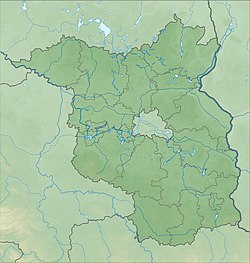| Zwethau Formation | |
|---|---|
| Stratigraphic range: Cambrian Stage 3 (Atdabanian) | |
| Type | Formation |
| Unit of | Falkenberg Group |
| Sub-units | Upper & Lower Torgau members |
| Lithology | |
| Primary | Limestone |
| Location | |
| Coordinates | 51°36′N13°36′E / 51.6°N 13.6°E |
| Approximate paleocoordinates | 38°06′S106°36′E / 38.1°S 106.6°E |
| Region | Brandenburg |
| Country | Germany |
The Zwethau Formation is a geologic formation in Germany. It preserves fossils dating back to the Cambrian period. [1]

